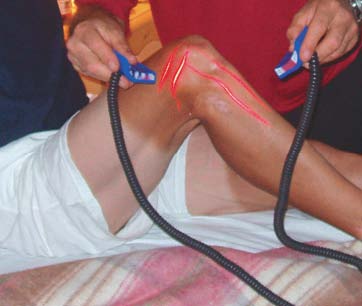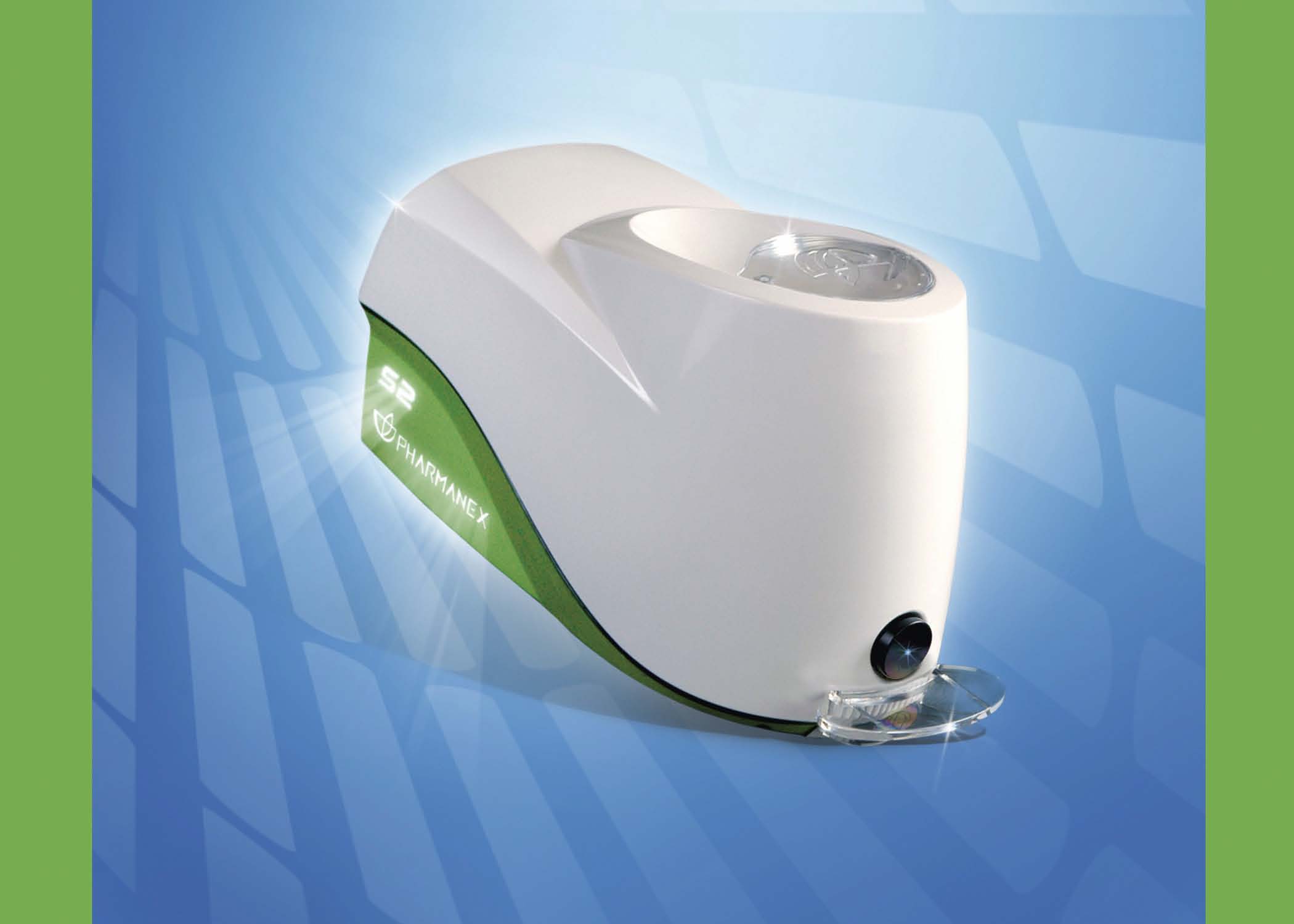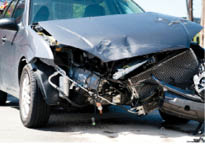Dr. Patrick Gentempo, President and CEO of the Chiropractic Leadership Alliance (CLA) and the Creating Wellness Alliance (CWA), is one of the featured presenters at the Chiropractic’ 07 Convention sponsored by The American Chiropractor in The Republic of Panama, Feb. 22-24. His themes of “cutting edge chiropractic success” and “technology-based chiropractic practice” are resonating with many thousands of chiropractors worldwide.
Dr. Gentempo and Dr. Christopher Kent shared a vision, over two decades ago, of a technological revolution within chiropractic. That vision continues to become reality as the Insight surface EMG they first introduced to chiropractic in 1988 has evolved becoming a fully integrated multi-technology platform that will actually calculate a score indicating neurological function of those patients that are scanned. This technology is currently in use on six continents, in many thousands of chiropractic clinics.
In an interview with The American Chiropractor (TAC), Dr. Gentempo shares his views on technology, offering you a preview of what to expect in Panama in February.
TAC: By your interpretation, what is technology-based chiropractic?
Gentempo: Technology-based chiropractic is a model of thinking and practice where the traditional philosophical uniqueness of chiropractic meets 21st century technology and objectivity. When I graduated from chiropractic school in 1983 and started practice, I heard many leaders and mentors claim, “You have to believe in chiropractic or have faith in chiropractic in order to succeed in chiropractic.”
To me, chiropractic is NOT a religion. It shouldn’t rely on faith or belief. However, to practice with the premise that lifestyle stress causes neural disturbance in the form of vertebral subluxation and to recommend care for individuals without spinal pain, resulted in a significant challenge…especially in light of the fact that the majority of clinical evaluations performed by most Doctors of Chiropractic entailed traditional ortho/neuro tests that were designed to evoke pain. How was the DC supposed to transcend the limitations of the back-pain practice? Did their patients have to believe in the benefits of chiropractic also?
Surveys have shown that over 90 percent of our profession recommends wellness/asymptomatic care for their patients and over 88 percent use and recommend that we keep the term vertebral subluxation complex. This challenge caused us not only to create technology, but also training programs to compliment the technology to ensure success.
By now, I am sure most of your readers have at least heard of our four-day practice transformation training, called Total Solution. We have had over 5,000 graduates and it continues to grow each year. The number one reason DC’s come to Total Solution is because they have a back and neck pain practice, but want a lifetime, family wellness care practice. Our Insight technology with our Total Solution training combine to get the DC across that chasm. So, technology-based chiropractic is where the foundations of the practice literally rest: on the use of technology. The DC’s not only use technology as a basis for their care and recommendations—as compared to subjective and unproven assessments, such as orthopedic tests—but also use technology for their marketing, patient education, staff training, record keeping, and even in their adjusting. Welcome to the very exciting 2nd century of chiropractic!
TAC: How do you view CLA’s standards as a company?
Gentempo: Our standards are extremely high. I don’t settle for second best; never did and never will. I am obsessed with utilizing the absolute best technology available in every product we produce. I am also passionate about integration, meaning not only having multiple technologies, but having them integrate properly. Think in terms of a word processor, spreadsheet, database, e-mail and calendar management and presentation software…and then think, Microsoft Office. Integration translates into the whole being greater than the sum of its parts. Some vendors try to offer multiple technologies from multiple manufacturers. It has a cobbled effect that dilutes impact and usefulness. The Insight’s individual technologies shine as they stand alone but, through their integration, they create transcendence. I refer to it as technological poetry. An example of this is the overwhelming market response we are getting to our patent pending NeuroSpinal Functional Index, or NSFi for short. The findings of the Insight’s five technologies boil down to a simple, elegant, easy-to-understand number. With all this testing, the doctor now has one number to communicate and the patient has only one number to understand. It is simple, yet extremely powerful.
We hold several patents on the Insight and have several more pending. In the technology business, this is critical. It means other companies can be in our product category, but they can’t develop or sell what we do, because we have intellectual property protection.
Also, through technological superiority, we bring increased credibility to our clients. The Insight is the only technology in its category to receive certification from the Space Foundation, which was co-founded by NASA! An earlier version of the Insight was used on two shuttle missions and we are currently corresponding with NASA on proposals for new projects on which to collaborate. Our clients are trained to leverage this distinction with a press release and other marketing strategies to the benefit of their practice. When a DC can claim that he or she uses Space Certified technology in their practice, such a statement enhances the perceived value of their services and they, themselves, are held in high esteem by the general consumers.
Another clear standard that CLA has established is that we don’t sell a “machine,” we sell a result. Technology, by itself, does nothing. It is the person who uses that technology that gets the result. We are exacting experts on practice success. We have painstakingly analyzed where chiropractors have struggled, and often failed, and have developed systems of thinking and practice that resolve those issues. The technology is a critical piece to that puzzle. But, if someone is struggling in practice or seeking to move their practice in a new direction, simply adding technology without a strategy and the resulting tactics may compromise their desired result. In this scenario, they’ve now spent substantial money, yet failed to move forward. Our standards won’t allow for this to happen. That is why we have integrated programs like Total Solution with the Insight technology.
So, our standards are simply this: Get our technology, use it, come through our training. If, at that point, it is not right for you, give it back to us and we give you back all your money or cancel your lease. Our standard is that we only want people to win BIG with us, not spend money and get hurt. Our testimonials are strong evidence that our standards separate CLA from competitors, while having lasting benefits for our clientele.
TAC: What technologies have you put on the Insight platform and why?
Gentempo: CLA’s Insight platform utilizes up to five technologies. Surface EMG, infrared thermal scanning, pressure algometry, inclinometry (range of motion), and our most recent and immensely exciting addition, heart-rate variability. We chose these technologies based upon what is most critical for the DC to measure, along with what has the best literature support.
It all started with surface EMG or sEMG, for short. This technology measures patterns of motor nerve activity by looking at muscle energy patterns. There is published research that shows that chiropractic adjustments improve these patterns in a significant and positive way, as compared to controls. Since chiropractors are primarily concerned with the function and performance of the nervous system, it is important to note that the nervous system has three sub-systems: sensory, motor, and autonomic. We think it is critical to objectively and non-invasively assess all three—and we do. SEMG handles the motor portion.
What really excites me is that we have invested considerably in the Insight’s sEMG performance and features. Just recently, we released our newest version that performs full digital signal processing. The new Insight sEMG not only gives you signal amplitude, but also gives you a spectral analysis of each individual static site scanned. I realize I may be speaking Greek here for a lot of your readers, but I am excited because our technology developed for chiropractic is groundbreaking—the best EMG you’ll find worldwide. Not only is it number one in static performance, but the Insight’s dynamic sEMG performance also tops the industry. Bringing greater prestige to our profession is a major part of our company’s agenda.
The Insight’s infrared thermal scanner performs paraspinal thermal autonomic mapping. The autonomic system is the part of the nervous system that regulates one’s organs and glands. Rounding out the three dimensions of the nervous system is our Insight Sensory Sensitivity Mapper, generically referred to as an algometer. With this technology, we can measure and map sensitivity or pain, rather than subjectively recording it. The Insight maps spinal motion with our two-point inclinometer. It is critical, when measuring ROM, that it be done at two points, so that movement artifact can be removed and the clinician can measure pure spinal motion. The Insight ROM tester accomplishes this in groundbreaking fashion.
Last, but certainly not least is our Insight Pulse Wave Profiler, which measures heart rate variability (HRV). HRV is the most exciting new technology in the field of cardiology and, in my opinion, chiropractic. Recently, there has been research published by Zhang and his cohorts that concluded that chiropractic adjustments have beneficial effects on HRV measurements. This is a serious breakthrough! We are talking about the heart. The cholesterol craze has everyone concerned with the health of his or her heart. Imagine measuring the heart, adjusting the spine and then showing beneficial changes in heart function to your patients. The power of this is self-evident. This is why technology-based chiropractic is revolutionary.
To summarize all the Insight’s functions succinctly: We take the patient on a technological journey from pain (algometer), to movement (inclinometer/ROM), to non-symptomatic nervous system function (sEMG and thermal scanning) to whole body health and wellness (heart rate variability). Can you imagine the difference between lifting legs and pushing heads and this? When I graduated from school in 1983, this was inconceivable. Today, with the Insight, it is a reality. Technology is the best thing that ever happened to chiropractic practice.
TAC: What regulatory and research precedents are there for the technologies used by the Insight?
Gentempo: As for regulatory precedents, Dr. Chistorpher Kent and I have been, by far, the most active advocates of sEMG and the other Insight technologies in the profession. We—Dr. Kent more than myself—have helped write the regulations for sEMG in multiple States. We have been involved in writing diagnostic assessment and imaging chapters for a variety of guidelines documents. And, Dr. Kent has written chapters in leading textbooks on sEMG and thermal scanning.
A perfect example of how our years of work in this realm have benefited users of this technology, even if they aren’t our clients, comes from an article you recently ran in your magazine. The interviewee was describing what he referred to as a “landmark case” for sEMG in Florida. In essence, he had a client who purchased his equipment who was denied payment by insurance coverage. As a result, he went to Florida to testify on behalf of his client to help him get paid. The judge ruled in favor of the chiropractor. The funny thing is, if one were to read the Final Order of the Administrative Court Judge, the judge references the sEMG chapter in the Chiropractic Practice Guidelines and Parameters for the State of Florida. Well, Dr. Kent was the principal author of those guidelines. Due to his earlier work, this case was won.
In short, in defense and promotion of this technology, we have been to court, held high-level meetings with third party payers, testified in front of State licensing boards…you name it.
An extremely important regulatory issue is the Food and Drug Administration in the US, Health Canada (the FDA equivalent in Canada) and CE in Europe. You don’t want to even consider technology that has any issues complying with these federal agencies. This is a very tricky, resource-intensive road that some manufacturers don’t properly follow.
For example, if you can’t get a current FDA 510 (K) registration for the product, that lists the product’s name, all the technologies on its platform, and has displayed the intended uses of the technology, which must match up to the way you intend to use the technology, don’t buy it. Some manufacturers may try to skirt the issue by simply registering with the FDA as a manufacturer, but that does not suffice and is not the same as having the actual device you are purchasing properly registered.
All this legalese could comprise a book. But, suffice it to say, we are painstaking in our compliance issues with the Insight. Our exclusive manufacturer has ISO 9001 and ISO 13485 registration that was not even needed to comply—but it puts us at a higher standard.
As far as research goes, the Insight sEMG technology is unique in that its reliability, applications, protocols, indications and normative data have all been published in peer-reviewed journals and are taught at leading chiropractic colleges. Dr. Kent and I have ten peer-reviewed publications to our credit alone. Also, I would like to point out that independent researchers have performed and published very impressive research and reliability studies with the Insight. In one case, we only found out about it after it was done. Having published reliability studies is a critical credibility factor with clinical technology. I am proud to say the Insight has many of these.
TAC: Why are there some detractors out there as to use of technology in the Insight product category?
Gentempo: Thank you for this question. What would chiropractic be without detractors?!
Seriously, there are multiple reasons, none of them good. One is simply ignorance. They don’t know, understand, or have never used the technology. These people just parrot what others who are ignorant have said. In addition, there are some informed detractors who, to a reasonable extent, understand the technology. The problem is they have different views of what the clinical goals for a chiropractic patient should be versus the majority of the profession. If you subscribe to the attitude that chiropractors should limit their practices to a handful of uncomplicated musculoskeletal conditions then, perhaps, for those purposes the technology is inconsequential. However, if one is looking to measurably improve structure and function, one must measure it. Hence, the Insight technology becomes a necessity. Nobody debates that the Insight accurately and reliably measures what it claims to measure. The only question is, are these measurements of importance to the practitioner, given the clinical goals he or she has for the patient.
TAC: Lastly, what things should a DC consider when contemplating the purchase of technology?
Gentempo: I suggest the following:
• First and foremost, have a clear vision of what impact you want this technology to have on your practice and life. Believe it or not, we have a lot of DC’s who have purchased the Insight, but didn’t get the vision of the technology till after they came to Total Solution.
• Have reliability studies and protocols, specifically for the instrument you are purchasing, been published in the peer-reviewed literature? Is there any university-based research?
• Does the instrument have the proper federal agency registration (FDA, Health Canada, etc.), as I discussed earlier?
• What is the company’s and its principals’ reputation in the field? Have they received significant acknowledgements or awards from the field?
• What type of training and ongoing support can the company offer? Do they have the resources and expertise to help you overcome your practice challenges or reach your practice goals?
TAC: Any final thoughts?
Gentempo: In order for technology to succeed in chiropractic practice, it must serve a specific and meaningful purpose. When it does, the impact is immensely powerful. Our profession needs significantly increased credibility and certainty. The Insight technology does exactly that and I won’t rest till every DC recognizes the power and importance of technology to the future of this profession. When it comes to technology, I have three words: Resistance is futile!
You may contact Dr. Patrick Gentempo at 1 International Blvd., #750, Mahwah, NJ 07495. Phone 201-252-3220, Executive Assistant Mike Thompson, Ext. 114; www.subluxation.com; www.creatingwellness.com.






 • One injury or fatal crash every 13.5 minutes
• One injury or fatal crash every 13.5 minutes